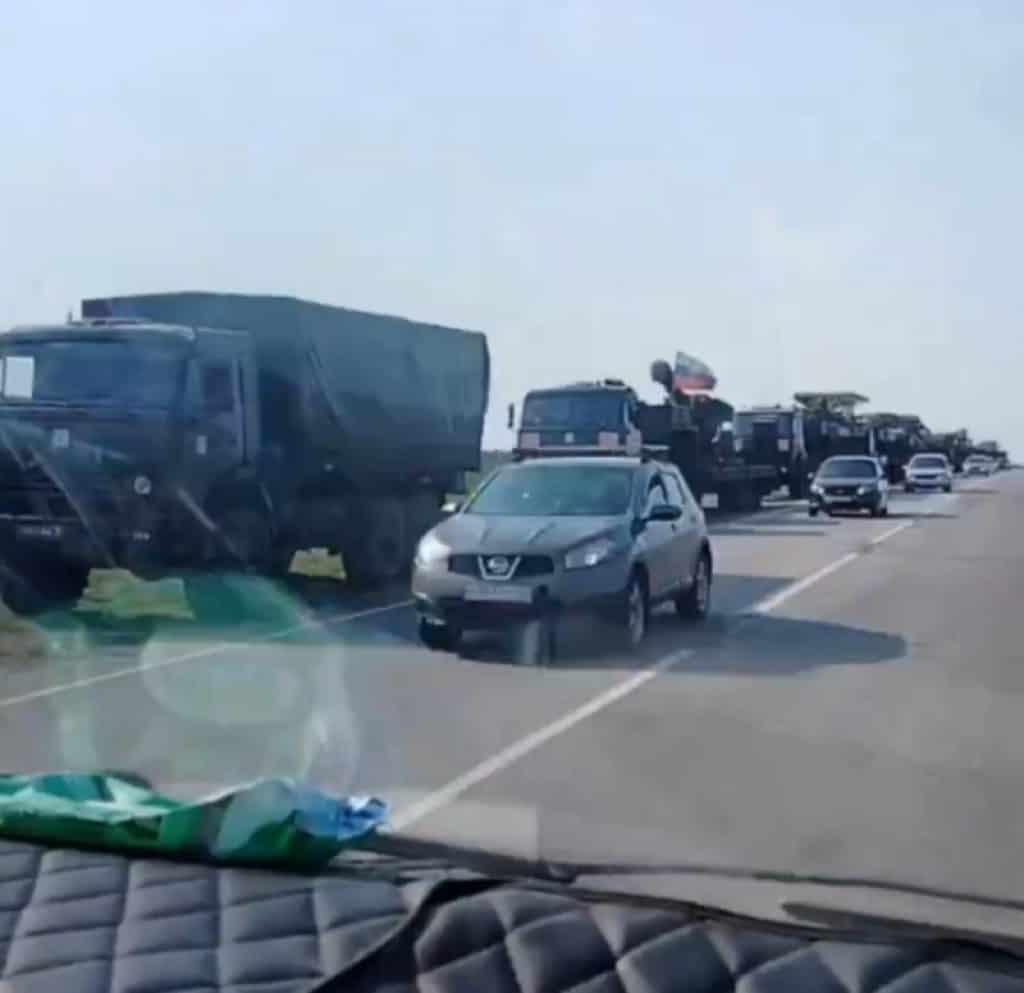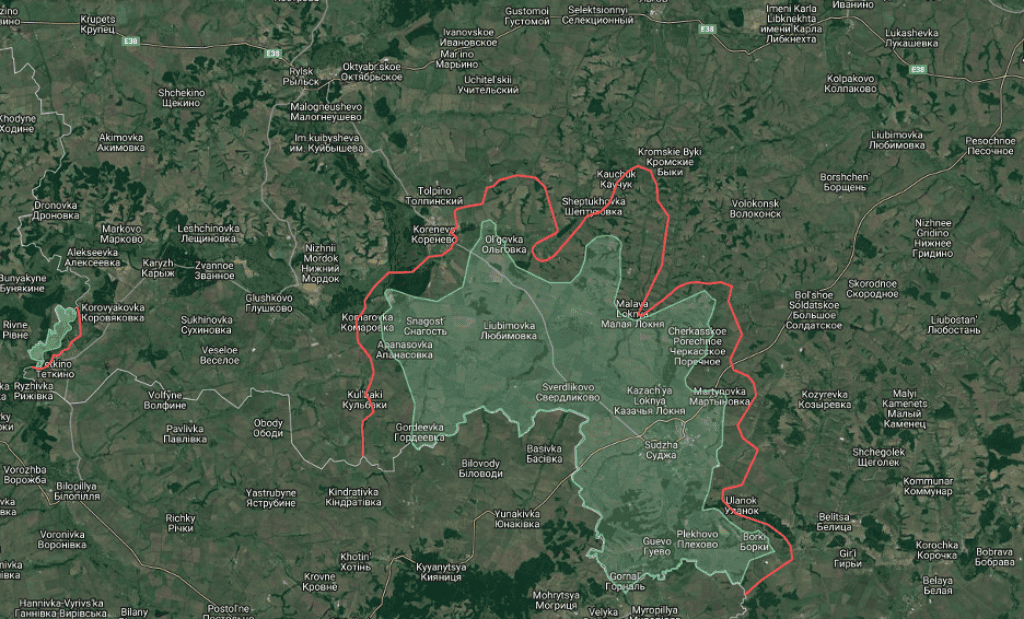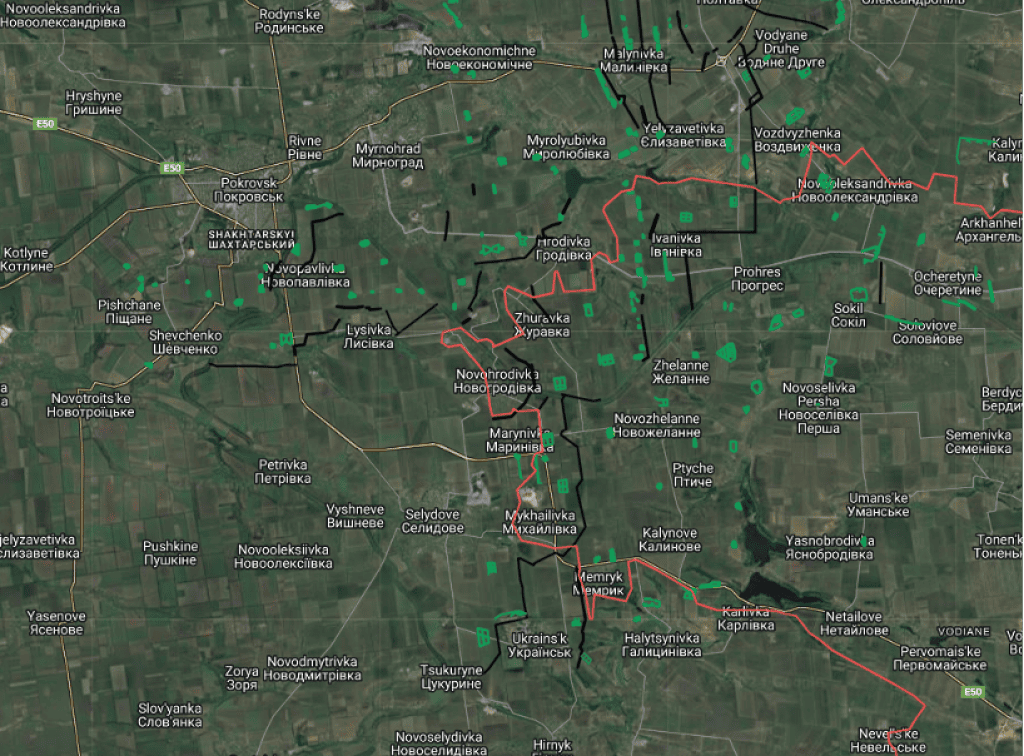
Though Kyiv hoped its Kursk offensive would undercut Russia’s push toward the eastern city of Pokrovsk, that has not happened. Instead, Russian advances have accelerated, while Russia has redeployed forces from other areas to Kursk Oblast. Moscow seems to have calculated it can contain the crisis in Kursk while exploiting Ukraine’s shortage of troops in Donetsk Oblast.
Russian forces flow to Kursk
After the chaotic opening days of the Kursk offensive, Russia’s defense stiffened. Ukrainian advances slowed considerably after the first week or so, though Ukraine currently retains the operational initiative.
When the offensive began on August 6, Russia lacked operational reserves ready to reinforce its thinly manned lines near the Kursk border. Reportedly, one of the first units sent to stem the bleeding was a battalion from the 9th Motor Rifle Regiment that was resting in Kursk Oblast after having rotated out from fighting north of Kharkiv. In the days and weeks since August 6, Russia has redeployed various naval infantry, motor rifle, airborne and air assault, Spetsnaz, and unmanned aerial vehicle (UAV) units, along with volunteer units.
By August 27, Russia had transferred some 30,000 troops and counting to Kursk Oblast, according to General Oleksandr Syrskyi, commander-in-chief of the Armed Forces of Ukraine. The Russians are currently trying to establish “a ring of defense around our offensive group [while] planning further counter-offensive actions,” Syrskyi added.
So far, the forces sent to Kursk have mainly come from Kharkiv Oblast, southern Ukraine, and the Chasiv Yar area. Russia has also pulled soldiers from training grounds in nearby Russian regions and occupied Ukrainian territory. Moscow may also be sending conscripts from formations across Russia, likely intended to man secondary lines, dig trenches, and carry out other support functions. Organizing command and control of this hodgepodge of units has probably been a challenge.
These redeployments have occurred at a fairly slow pace. This may reflect the disorganization that characterized Russia’s initial response, as well as logistical challenges in moving large numbers of troops and equipment. But it could also reflect a conscious decision to avoid taking Ukraine’s bait. Moscow may worry the Ukrainians will open a second front elsewhere. Alternatively, Russia may believe it can afford to be patient, attritting Ukrainian forces in Kursk over time rather than rushing into a costly counteroffensive. Kremlin propaganda is setting expectations that the operation will last months.
Ukraine has also committed additional forces to the offensive. The initial phase comprised elements of four air assault and mechanized brigades and two separate assault battalions, supported by engineer-sapper, artillery, UAV, air defense, and electronic warfare units. The additional forces include elements of some of Ukraine’s better units, such as the 95th Air Assault Brigade, 92nd Assault Brigade, and 36th Marine Brigade. The total force involved in the operation probably now stands at around 10,000 to 20,000 troops, including support personnel.
Following Ukraine’s rapid early gains, President Volodymyr Zelenskyy reportedly pushed his military to continue pressing deeper. Syrskyi, on the other hand, reportedly concluded that Ukraine would be better off widening its salient to make it more defensible.
Over the past few weeks, Ukrainian forces have gained some ground east and southeast of Sudzha, though Russia rebuffed Ukrainian troops near the village of Gir’i. Ukraine has also made some westward advances and struck Russian bridges and pontoon crossings over the Seym River, perhaps in preparation for an attempt to take the area from Tetkino to Glushkovo.
At the same time, Ukraine still appears to be trying to push deeper in some areas, particularly near Korenevo. Ukraine may make some additional northward gains, but a much farther advance—to Rylsk, for instance—is unlikely. This would stretch supply lines and probably require more forces than Kyiv can spare.

Russia exploits Ukraine’s vulnerability at Pokrovsk
Kyiv has assumed significant risk with the Kursk offensive. Its forces defending eastern Ukraine were already stretched thin and struggling to hold back the Russians. As Syrskyi noted on August 27, one of Kyiv’s goals for the Kursk offensive “was to divert significant enemy forces from other areas” where Russia has been attacking. The chief concern is Russia’s advance toward the city of Pokrovsk, a key road and rail transit hub in Donetsk Oblast.
By this measure, the Kursk offensive so far has not succeeded. Although Russia has transferred considerable forces from elsewhere in Ukraine, the Russians have actually reinforced their Pokrovsk grouping, according to Ukrainian officials. With Ukrainian forces now stretched even thinner by the Kursk offensive, Moscow apparently seeks to exploit this opportunity to advance in Donetsk Oblast.
Russian advances have accelerated in recent weeks. Since August began, the Russians have taken around 11 square kilometers per day compared to 5.8 in July and 3.8 in June, with most of those gains coming on the Pokrovsk axis.
This week, Russia captured most or all of Novohrodivka, a town with a prewar population of 14,000, located around 8 kilometers from Pokrovsk. Previously, Russian forces often needed weeks or more to take smaller, less well-fortified settlements. Meanwhile, the Russians quickly pushed to the outskirts of Selydove (prewar population of 21,500) and took the nearby villages of Kalynove, Memryk, and Karlivka. Russia may be aiming to widen its left flank before attempting to take Pokrovsk and the nearby city of Myrnohrad.

The chief reason for Russia’s gains is Ukraine’s manpower shortage. After Russia took the nearby city of Avdiivka in February, Ukraine built multiple defensive lines between Avdiivka and Pokrovsk. But Ukrainian units simply lack enough infantry to hold positions, rendering their fortifications less useful.
In the past, a shortage of reserves has repeatedly compelled Kyiv to pull units from one area to put out fires in another. This occurred during the battles for Bakhmut and Avdiivka, as well as Russia’s Kharkiv offensive in May. More recently, after a botched unit rotation enabled Russia to advance toward the city of Toretsk, Ukraine sent forces from its 95th Air Assault Brigade and other units to try to hold the city.
But now, Kyiv has few units available to firefight at Pokrovsk. Ukraine committed much of its limited reserves to the Kursk operation. It even pulled some units from the Pokrovsk, Toretsk, and Chasiv Yar areas from Donetsk Oblast (including from the 95th Brigade). Ukrainian troops in Donetsk Oblast also say the Kursk offensive has diverted some of their ammunition supply. Kyiv has tried to shore up its lines by deploying newly formed units and shifting National Guard forces from the south or northeast. But so far, the Russians are still advancing.
Pokrovsk’s fall would undermine Ukraine’s defense in other parts of Donetsk Oblast, especially to the south. By putting the city within range of tube artillery and first-person view (FPV) drones, Russia may have already disrupted Ukrainian logistics to some degree.
Ukraine lacks a solid defensive line behind Pokrovsk. Taking the city could allow the Russians to advance in multiple different directions. They could attack southward against the left flank of the Ukrainian forces between Pokrovsk and Vuhledar in southern Donetsk Oblast, where Russia has recently also begun to make gains. Alternatively, Russia could try to push northeast to Kramatorsk, the other major logistics hub in Donetsk Oblast. Russia could also try to attack westward into Dnipropetrovsk Oblast.
If Pokrovsk does fall, what happens next will depend largely on how quickly Russia can take the city and at what cost. If Ukraine can slow the Russians down and inflict heavy losses, it can buy time to dig in behind Pokrovsk while sapping Russia’s offensive potential. Russia’s struggles in scaling offensive operations above the company level should also hamper its exploitation of Pokrovsk’s potential fall.
Regardless, Ukraine will need to relieve and reinforce battered units currently defending Donetsk Oblast. Freshly mobilized troops can help. But so long as many of Kyiv’s best units are tied up in Kursk, Ukraine may struggle to stabilize its lines.







